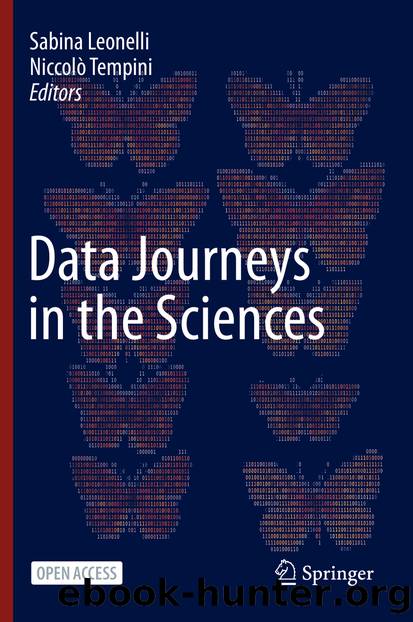Data Journeys in the Sciences by Unknown

Author:Unknown
Language: eng
Format: epub
ISBN: 9783030371777
Publisher: Springer International Publishing
ISTI highlight several positive features of their envisioned simulation-based approach to the generation of benchmarking datasets. Time series of temperature values from a climate model will be free from inhomogeneities, so the “true” climate signal will be known. In addition, the data will include “globally consistent variability”, including coherent variability associated with events like El Nino – Southern Oscillation (ENSO). Moreover, it will be possible to generate inhomogeneous worlds with different levels of background climate change, since climate models can be run under a variety of scenarios in which greenhouse gas concentrations are rising rapidly, held constant, etc.; at least some information then can be obtained about how the skill of different homogenization algorithms varies, if at all, with the level of background climate change.
ISTI proposes to provide ten inhomogeneous worlds/synthetic datasets in a given benchmarking cycle, each based on a different simulation, with the cycle of analysis and evaluation repeating roughly every 3 years (ibid.). The aim is for these different worlds to incorporate inhomogeneities with a range of frequencies and magnitudes, seasonality, and geographical pervasiveness (e.g. when a whole network changes observing practices at once). Participants would submit their homogenized benchmark data for evaluation by ISTI. The results of this assessment as well as “truth” for the ten cases – i.e. the clean analog worlds produced by sampling/interpolating simulation results – would subsequently be unveiled. The cycle would then repeat.
ISTI’s envisioned benchmarking system is intended to support three important scientific goals of the ISTI project: quantification of the potential structural uncertainty of a given climate data product; objective intercomparison of such data products; and advancing homogenization algorithm development (Willett et al. 2014, 192). These are discussed here in reverse order.
The benchmarking scheme aims to support homogenization algorithm development by helping developers to learn more about the strengths and weaknesses of their algorithms – which sorts of inhomogeneities they are good at detecting and correcting, which they are not, etc. In further support of this goal, ISTI plans to provide some “open benchmarks” for which “truth” is also immediately available, so that participants can conduct some preliminary tests of their algorithms before submitting to the evaluation exercise. But the task of homogenizing data for which “truth” is not known to algorithm developers remains very important, since for these cases developers cannot optimize their algorithms to specific features of known inhomogeneities in the data; such optimization can make an algorithm a good performer on that particular dataset, even though it might perform poorly on datasets with somewhat different (but still plausible) inhomogeneity profiles.
It is important to recognize that, insofar as what is learned via ISTI’s benchmarking exercises leads to changes in homogenization algorithms, data journeys of the future that involve the application of those algorithms will be somewhat different too. Reconstructions of the evolution of global and regional surface temperatures since pre-industrial times will be produced again and again as new observations are made and additional past data are rescued and digitized; with homogenization algorithms that are changed in light
Download
This site does not store any files on its server. We only index and link to content provided by other sites. Please contact the content providers to delete copyright contents if any and email us, we'll remove relevant links or contents immediately.
Adulting by Kelly Williams Brown(3717)
Figure Drawing for Artists by Steve Huston(2828)
Draw Your Day by Samantha Dion Baker(2733)
Drawing Cutting Edge Anatomy by Christopher Hart(2715)
Drawing Shortcuts: Developing Quick Drawing Skills Using Today's Technology by Leggitt Jim(2552)
Make Comics Like the Pros by Greg Pak(2451)
Draw to Win: A Crash Course on How to Lead, Sell, and Innovate With Your Visual Mind by Dan Roam(2297)
How Proust Can Change Your Life by Alain De Botton(2288)
Day by Elie Wiesel(2266)
How The Mind Works by Steven Pinker(2253)
0041152001443424520 .pdf by Unknown(2250)
Rapid Viz: A New Method for the Rapid Visualization of Ideas by Kurt Hanks & Larry Belliston(2232)
Modern Cartooning by Christopher Hart(2214)
Poses for Artists Volume 2 - Standing Poses: An essential reference for figure drawing and the human form. (Inspiring Art and Artists) by Justin Martin(2165)
Draw-A-Saurus by James Silvani(2127)
Learn Drawing Quickly by Sharon Finmark(2114)
Tattoo Art by Doralba Picerno(2103)
Poses for Artists - Dynamic & Sitting: An essential reference for figure drawing and the human form (Inspiring Art and Artists Book 1) by Justin R Martin(2077)
Drawing and Painting Birds by Tim Wootton(2023)
